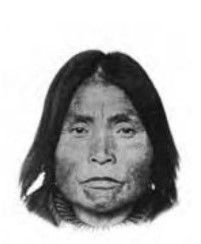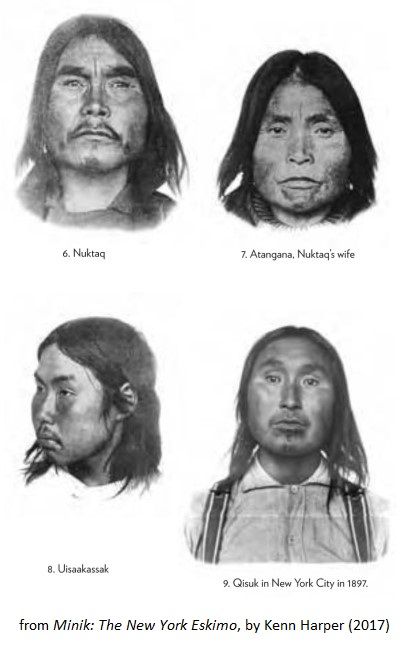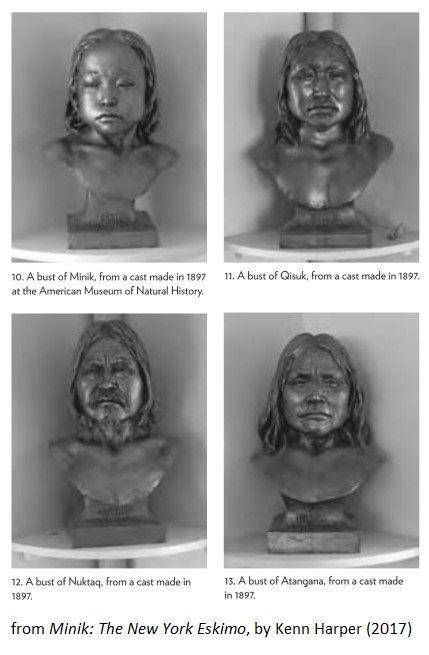From 1898 until 1993 the American Museum of Natural History retained the remains of Atanqana, one of six Arctic Eskimos brought to New York City by Peary in 1897. Born c.1850-1860 in northwestern Greenland, she was known as a great shaman among her people. When her husband agreed to participate in an anthropological study at the museum, she and their 12-year-old adopted daughter, Aviaq, accompanied him on the journey, along with three other Inuits, including the celebrated Minik Wallace and his father, Qisuk. All were soon felled by tuberculosis and other urban diseases, and after the death of Minik's father, the group was brought to the Upstate New York estate of museum official William Wallace. But both the move away from the city and Atanqana's healing skills proved futile, and she, Nuktaq, and Aviaq died there soon afterwards. Their bodies shared the same fate as Qisuk's, and were subsequently treated like biological specimens. Mounted for display at the museum, their skeletons remained there for over 95 years. In 1993 author Kenn Harper succeeded in having the four returned to Greenland, where they were buried at Qaanaaq, in Thule. The plaque marking the site bears the Inuit inscription "Nunaminqnut Uteqihut" ("They Are Home").
From 1898 until 1993 the American Museum of Natural History retained the remains of Atanqana, one of six Arctic Eskimos brought to New York City by Peary in 1897. Born c.1850-1860 in northwestern Greenland, she was known as a great shaman among her people. When her husband agreed to participate in an anthropological study at the museum, she and their 12-year-old adopted daughter, Aviaq, accompanied him on the journey, along with three other Inuits, including the celebrated Minik Wallace and his father, Qisuk. All were soon felled by tuberculosis and other urban diseases, and after the death of Minik's father, the group was brought to the Upstate New York estate of museum official William Wallace. But both the move away from the city and Atanqana's healing skills proved futile, and she, Nuktaq, and Aviaq died there soon afterwards. Their bodies shared the same fate as Qisuk's, and were subsequently treated like biological specimens. Mounted for display at the museum, their skeletons remained there for over 95 years. In 1993 author Kenn Harper succeeded in having the four returned to Greenland, where they were buried at Qaanaaq, in Thule. The plaque marking the site bears the Inuit inscription "Nunaminqnut Uteqihut" ("They Are Home").
Family Members
Advertisement
Explore more
Sponsored by Ancestry
Advertisement






